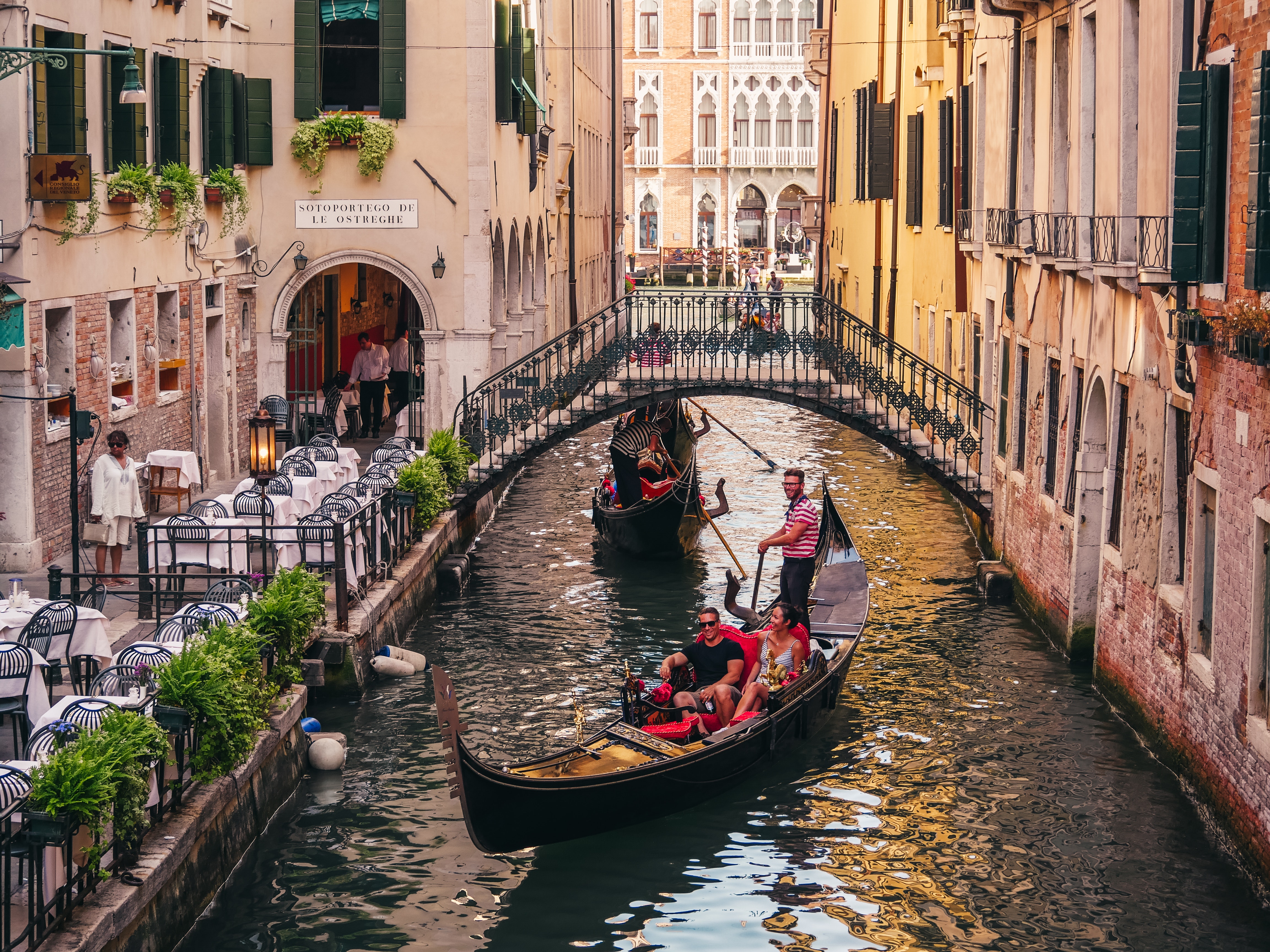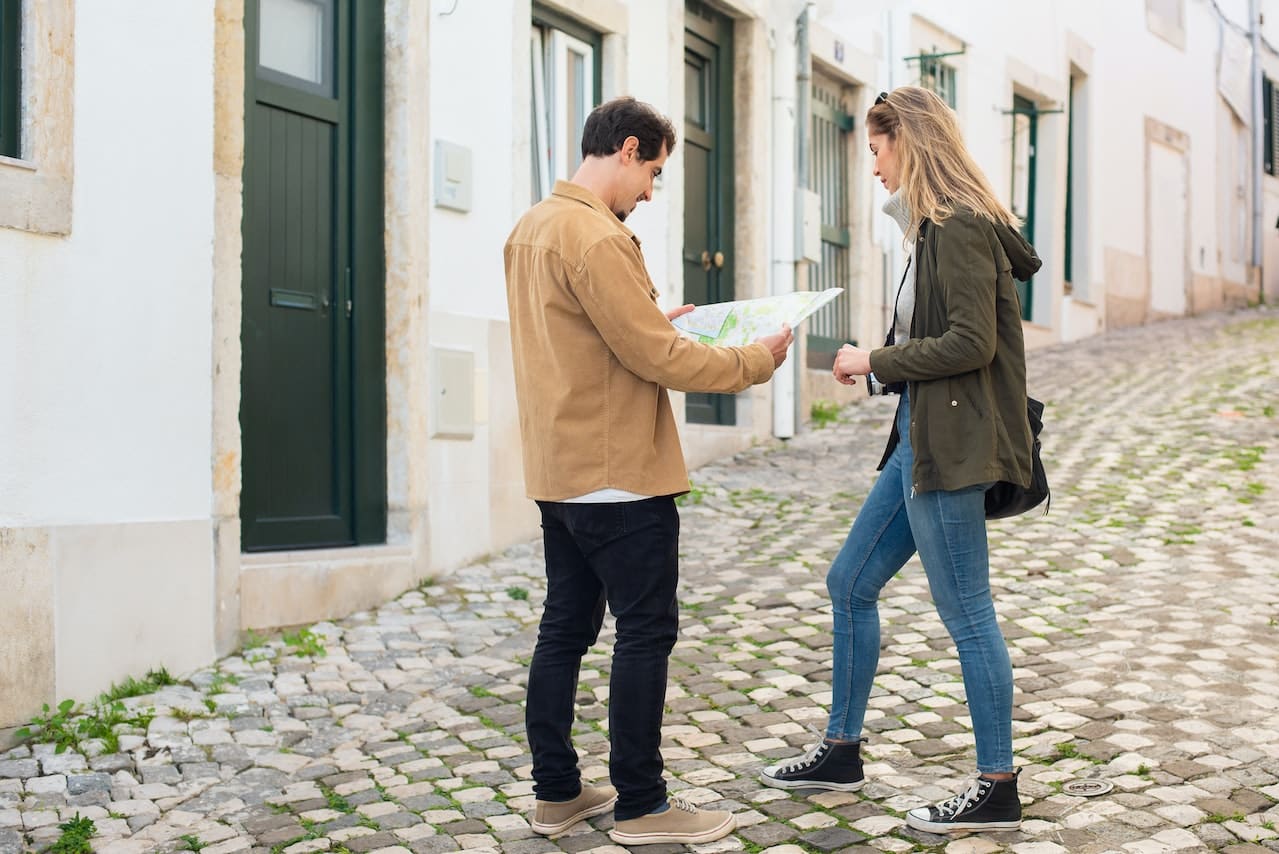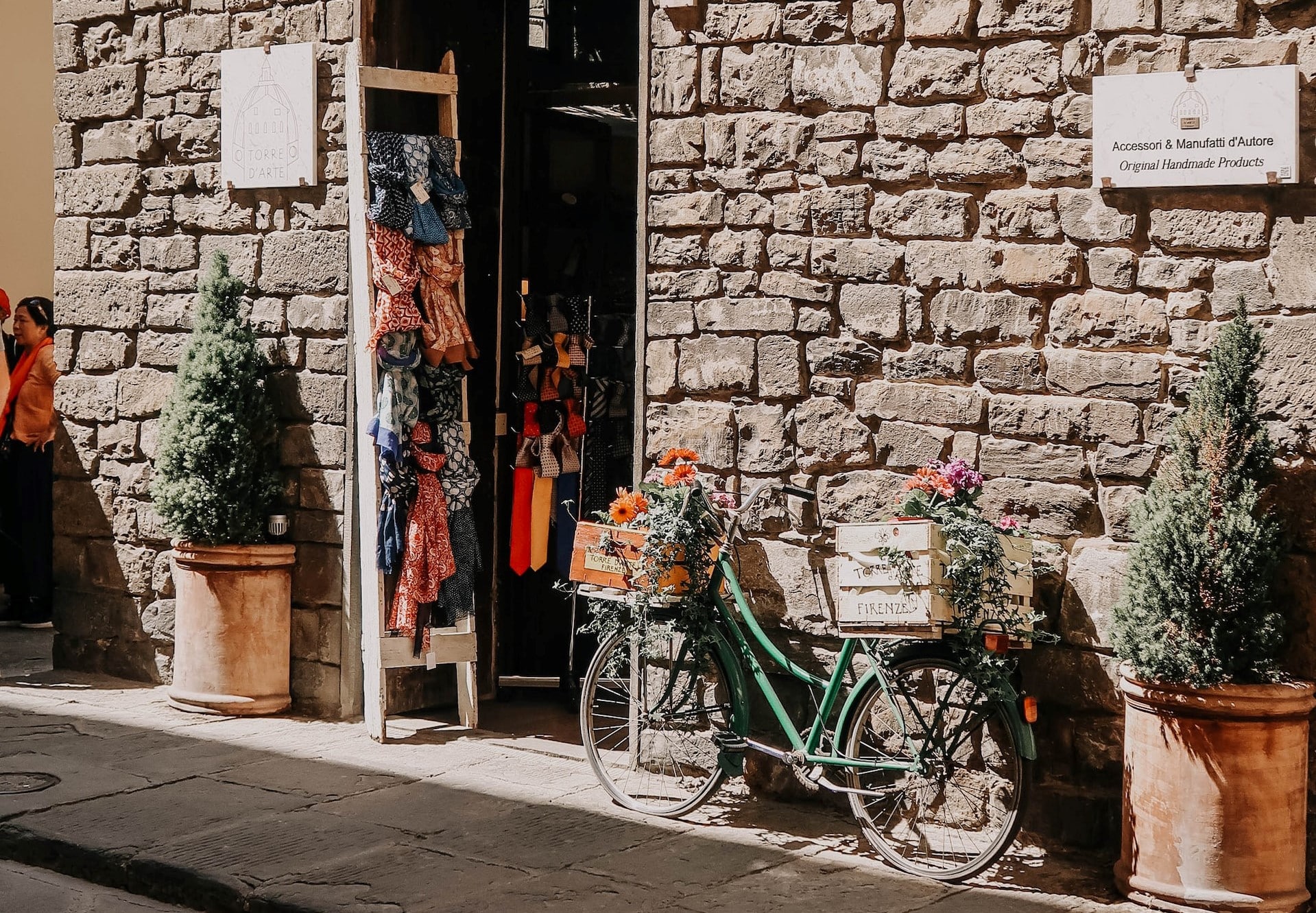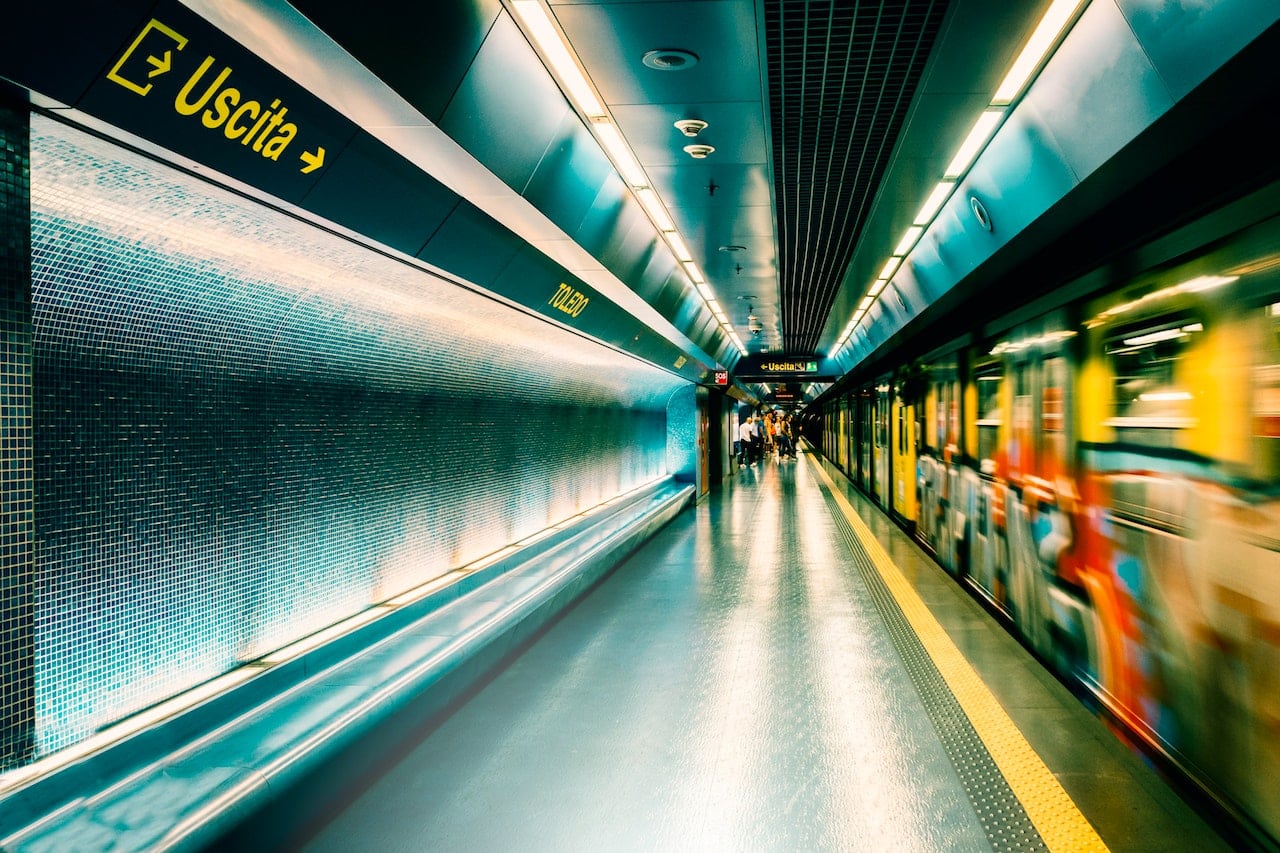
170+ Key Italian Travel Phrases So You Can Travel Stress-free Around Italia
About to go on that Italian trip of a lifetime? Don’t forget to take some key Italian travel phrases with you before you set off on your adventure!
Even if you haven’t planned a trip to Italy, these travel phrases will be useful for any Italian learner looking to add more words and phrases to their vocabulary!
This post will show you more than 170 of the most common Italian travel phrases, words and questions to help you prepare for any situation you might find yourself in while traveling.
Contents
- 1. Essential Italian Phrases
- 2. Italian Greetings and Goodbyes
- 3. Making Small Talk in Italian
- 4. Asking for Directions in Italian
- 5. Italian Question Words
- 6. Italian Words for Shopping
- 7. Italian Phrases for Eating Out
- 8. Italian Words for Emergency Situations
- 9. Numbers, Time and Days of the Week in Italian
- 10. Transport Words and Phrases in Italian
- Tips for Learning Italian Phrases
- And One More Thing...
Download: This blog post is available as a convenient and portable PDF that you can take anywhere. Click here to get a copy. (Download)
1. Essential Italian Phrases
There are some basic words every Italian learner should learn as soon as possible. Here are some Italian essentials to remember!
| Italian | English |
|---|---|
| Sì | Yes |
| No | No |
| Forse | Maybe |
| Non lo so | I don't know |
| Penso di no | I don't think so |
| Ma certo! | Definitely!/Of course! |
| Per favore | Please |
| Grazie | Thank you |
| Prego | You're welcome |
| Scusa | Excuse me (informal) |
| Mi scusi | Excuse me (formal) |
| Mi dispiace | I'm sorry |
| Non parlo italiano | I don't speak Italian |
| Parli inglese? | Do you speak English? (Informal) |
| Parla inglese? | Do you speak English? (Formal) |
| Non capisco | I don't understand |
| Parli lentamente, per favore | Please speak slowly |
| Ripeta, per favore | Please repeat |
| Le presento... | This is ... (introduction) |
| Aspetta! | Wait! |
| Tranquilla/Tranquillo | Don't worry |
2. Italian Greetings and Goodbyes
It’s always polite to say hello and goodbye, no matter where in the world you are!
Remember these useful ways to say everything from “hi there” to “see you later!”
| Italian | English |
|---|---|
| Buongiorno | Hello/Good morning |
| Buon pomeriggio | Good afternoon |
| Buonasera | Good evening |
| Buonanotte | Good night |
| Salve | Hello (formal) |
| Ciao | Hello/Bye (informal) |
| Arrivederci | Goodbye/Until we meet again (informal) |
| Arrivederla | Goodbye/Until we meet again (formal) |
| A più tardi | See you later |
| A presto | See you soon |
| Riguardati | Take care |
| Ci vediamo | See you |
| A dopo! | See you later (today) |
| Alla prossima | Until next time |
| Buona giornata | Have a good day |
| Buona serata | Have a good evening |
| Pronto | Ready; Hello (used when answering the phone) |
| Pronto, chi parla? | Hello, who's speaking? |
With these phrases you’ll be able to greet and converse with any Italian you may meet!
Check out this video to see 10 essential phrases used by Italians everyday.
3. Making Small Talk in Italian
It’s always good to have some small talk phrases under your belt. Here are some phrases that’ll help you carry on a simple, casual conversation when you meet someone new.
| Italian | English |
|---|---|
| Come ti chiami? | What's your name? |
| Mi chiamo... | My name is... |
| Piacere di conoscerti | Nice to meet you |
| Come va? | How's it going? |
| Come sta? | How are you? (formal) |
| Come stai? | How are you? (informal) |
| Bene | Fine |
| Molto bene, grazie | Very well, thank you |
| Così così | So-so |
| Dove abiti? | Where do you live? |
| Abito a... | I live in... |
| Sono di... | I'm from... |
| Che lavoro fai? | What's your job? |
| Allora | So... |
| Davvero | Really? |
4. Asking for Directions in Italian
No matter how long you prepare for your trip— sooner or later, you’ll find yourself asking for directions.
Asking for directions starts with you approaching the other person with a “Mi scusi,” asking your question, then hearing the directions to your destination.
Here are some phrases that could help you navigate this conversation:
| Italian | English |
|---|---|
| Mi sono perso/persa | I'm lost |
| Dove? | Where? |
| Dov'è... | Where is... |
| Il bagno | The bathroom |
| Il museo | The museum |
| Il teatro | The theater |
| Il supermercato | The supermarket |
| La stazione | The train station |
| L'aeroporto | The airport |
| La stazione di polizia | The police station |
| Il parco | The park |
| Il centro | The town center |
| Gira a destra | Turn right |
| Gira a sinistra | Turn left |
| Vai diritto | Go straight |
| Vai in quella direzione | Go that way |
| Vai indietro | Go back |
| Vicino | Near |
| Lontano | Far |
| Fermi qui, per favore | Please stop here |
5. Italian Question Words
Some of the most important sentences you will hear are those that ask a question. Here are Italian question words that prefix Italian queries:
| Italian | English |
|---|---|
| Chi? | Who? |
| Che? | What? |
| Quando? | When? |
| Dove? | Where? |
| Quale? | Which? |
| Come? | How? |
| Perché? | Why? |
| Quanto? | How much? |
6. Italian Words for Shopping
Chances are that if you visit Italy, you’ll probably be doing some shopping. Here are some terms to know so you can get by:
| Italian | English |
|---|---|
| Cerca qualcosa? | Are you looking for something? |
| Posso aiutarla | Can I help you? |
| Cosa sta cercando? | What are you looking for? |
| Posso dare un'occhiata? | May I take a look? |
| Dove sono i camerini? | Where are the changing rooms? |
| Quanto vuole per questo? | How much do you want for this? |
| Quanto costa? | How much does it cost? |
| È troppo caro | That's too expensive |
| È così economico | That's so cheap |
| C'è uno sconto? | Is there a discount? |
| Lo compro | I'll take it/I'll buy it |
| Altro? | Anything else? |
| Nient'altro, grazie | Nothing else, thank you |
7. Italian Phrases for Eating Out
Italy is a land of good food and wine, so here are some words and phrases to help you have the best dining experience possible.
| Italian | English |
|---|---|
| Quanti? | How many? |
| Posso prenotare un tavolo per due? | Can I book a table for two? |
| Cosa vuoi che facciamo? | What do you want us to make? |
| Antipasto | Appetizer |
| Primo | Main course |
| Secondo | Second course |
| Contorno | Side dish |
| Insalata | Salad |
| Il dolce | Dessert |
| Posso ordinare... | Can I order... |
| Da bere? | What do you want to drink? |
| C'è una specialità locale? | Is there a local specialty? |
| Vorrei ordinare un dolce | I would like to order dessert |
| Preferisco la bistecca al sangue/cotta al punto giusto/ben cotta | I like my steak rare/medium/well-done |
| Un altro, per favore | Another one, please |
| È delizioso / È squisito | It's delicious |
| Sono allergico/allergica... | I am allergic... |
| ... alle noci. | ...to nuts. |
| ... al pesce. | ...to fish/seafood. |
| ... al glutine. | ...to gluten. |
| ... ai latticini. | ...to dairy products. |
| Sono vegetariano/vegetariana | I'm a vegetarian. |
| Sono vegano/vegana | I'm a vegan. |
| Il conto, per favore | The check, please |
| Posso pagare con... | Can I pay by... |
| ... la carta (di credito)? | ...credit card? |
| ... la carta di debito/il bancomat? | ...debit card? |
| Posso pagare in contanti? | Can I pay by cash? |
To learn more essential restaurant phrases and see them used in context by a native Italian speaker with Italian and English subtitles, check out this video.
By seeing these phrases used in context, you’ll quickly pick up on when and how to use them in your own conversations.
8. Italian Words for Emergency Situations
Vacations can be unpredictable, so it’s good to know how to ask for help and communicate that there’s an emergency:
| Italian | English |
|---|---|
| Aiuto! | Help! |
| C'è stato un incidente | There's been an accident |
| Chiamate un'ambulanza | Call an ambulance |
| Ospedale | Hospital |
| Farmacia | Pharmacy |
| Danno | Injury |
| Ferita | Wound |
| Dolore | Pain |
| Chiamate il pronto soccorso, per favore! | Call for first aid, please! |
| Chiama Uno, Uno, Otto! | Call 1-1-8 (Italy's emergency number) |
| Chiamate la polizia | Call the police |
| Sono stato assalito | I've been mugged |
| Ho perso il mio passaporto | I lost my passport |
| Dov'è l'ambasciata americana? | Where is the American embassy? |
9. Numbers, Time and Days of the Week in Italian
If you’re learning Italian or planning on visiting Italy, then these words will be essential!
| Italian | English |
|---|---|
| Uno | One |
| Due | Two |
| Tre | Three |
| Quattro | Four |
| Cinque | Five |
| Sei | Six |
| Sette | Seven |
| Otto | Eight |
| Nove | Nine |
| Dieci | Ten |
| Che ora è? | What's the time? |
| A che ora? | At what time? |
| Sono le... | It's... |
| Sono le quattro | It's 4 o'clock. |
| Sono le dieci | It's 10 o'clock. |
| È l'una * | It's one o'clock. |
| Sono le...e mezza | It's half past... |
| Sono le...e un quarto | It's quarter past... |
| Sono le...e quarantacinque / Sono le...e tre quarti / Sono le...meno un quarto | It's 45 minutes past.../Quarter to... |
| Sono le...meno dieci/cinque | It's ten minutes/five minutes to... |
| Di mattina | In the morning |
| Del pomeriggio | In the afternoon |
| Di sera | In the evening |
| Di notte | At night |
| Mezzogiorno | Midday/noon |
| Mezzanotte | Midnight |
| Che giorno è oggi? | What day is it today? |
| Lunedì | Monday |
| Martedì | Tuesday |
| Mercoledì | Wednesday |
| Giovedì | Thursday |
| Venerdì | Friday |
| Sabato | Saturday |
| Domenica | Sunday |
| Il weekend / Il fine settimana | The weekend |
*The only time in Italian that uses the singular “è…” is one o’clock. For example: “È l’una” (It’s one o’clock) but all the other times use the plural form “Sono le…” in Italian. Check out this post for a more in-depth guide to telling the time in Italian.
As you can see, knowing how to count and say numbers in Italian is useful for many different situations. To learn more numbers in Italian, you can read about them in this post.
10. Transport Words and Phrases in Italian
If you’re traveling in Italy, it’s likely you’ll have to travel in il taxi or il treno at least once!
Take a look at these phrases below to learn different ways of traveling and how to buy and book a ticket in Italian.
| Italian | English |
|---|---|
| La macchina | Car |
| L'autobus | Bus |
| Il treno | Train |
| La metropolitana | Metro |
| Il taxi | Taxi/Cab |
| Un biglietto | A ticket |
| Un biglietto di solo andata | One-way ticket |
| Un biglietto di andata e ritorno | Round-trip ticket |
| Dove posso comprare un biglietto? | Where can I buy a ticket? |
| Vorrei comprare un biglietto per... | I would like to buy a ticket to... |
| Qual è la prossima fermata? | What is the next stop? |
Now that you know these phrases for transport in Italian, you’re ready to travel!
But before you go, make sure you watch this video for travel tips for your trip to Italy.
Tips for Learning Italian Phrases
1. Read them out loud.
The best way to master basic Italian phrases is by practicing them in actual conversation with others; however, you may not have access to an Italian speaking partner.
If this is the case, you can still get a bit of practice in saying these phrases by simply reading them out loud. Hearing yourself say these phrases is an essential step to learning them.
2. Role-play them in different contexts.
In addition to saying the same words or phrases in different ways, you can role-play them in different contexts.
Try to write out a sample dialogue of a situation that would actually use some of these phrases. Then, you can read them aloud and practice being on both sides of the conversation.
Going through this process helps you remember them more and playing both sides doubles your practice time.
3. Immerse yourself in Italian media
The more exposure to Italian you get, the quicker you’ll pick up on the language.
Try watching Italian movies, listening to Italian music or reading Italian books. All of these are sure to contain the phrases from these posts and much more.
You can also try using FluentU to learn Italian phrases and vocabulary in context.
FluentU takes authentic videos—like music videos, movie trailers, news and inspiring talks—and turns them into personalized language learning lessons.
You can try FluentU for free for 2 weeks. Check out the website or download the iOS app or Android app.
P.S. Click here to take advantage of our current sale! (Expires at the end of this month.)
4. Practice with a native speaker.
Having a language exchange partner will give you the opportunity to practice the basic Italian phrases that you know and receive feedback on how you’re doing from a native speaker.
If you don’t know any native speakers personally, you can quickly find a conversation partner online on a site like Easy Language Exchange, HelloTalk or Tandem.
5. Use them in your everyday conversations.
Try to find as many opportunities as possible to use basic Italian phrases in your daily routines.
A great way to practice without having to find a language partner is by thinking or narrating what you’re doing in Italian.
6. Use flashcards.
If you’re having difficulty memorizing Italian words, phrases and expressions, invest the time in making flashcards.
This classic method really does work and you can choose to do it the old-fashioned way by making your cards by hand or there are several apps available to make them with your phone such as those listed in this post.
Now you have everything you need to navigate basic situations in Italian!
Buon viaggio! (Safe journey!)
Download: This blog post is available as a convenient and portable PDF that you can take anywhere. Click here to get a copy. (Download)
And One More Thing...
If you're as busy as most of us, you don't always have time for lengthy language lessons. The solution? FluentU!
Learn Italian with funny commericals, documentary excerpts and web series, as you can see here:
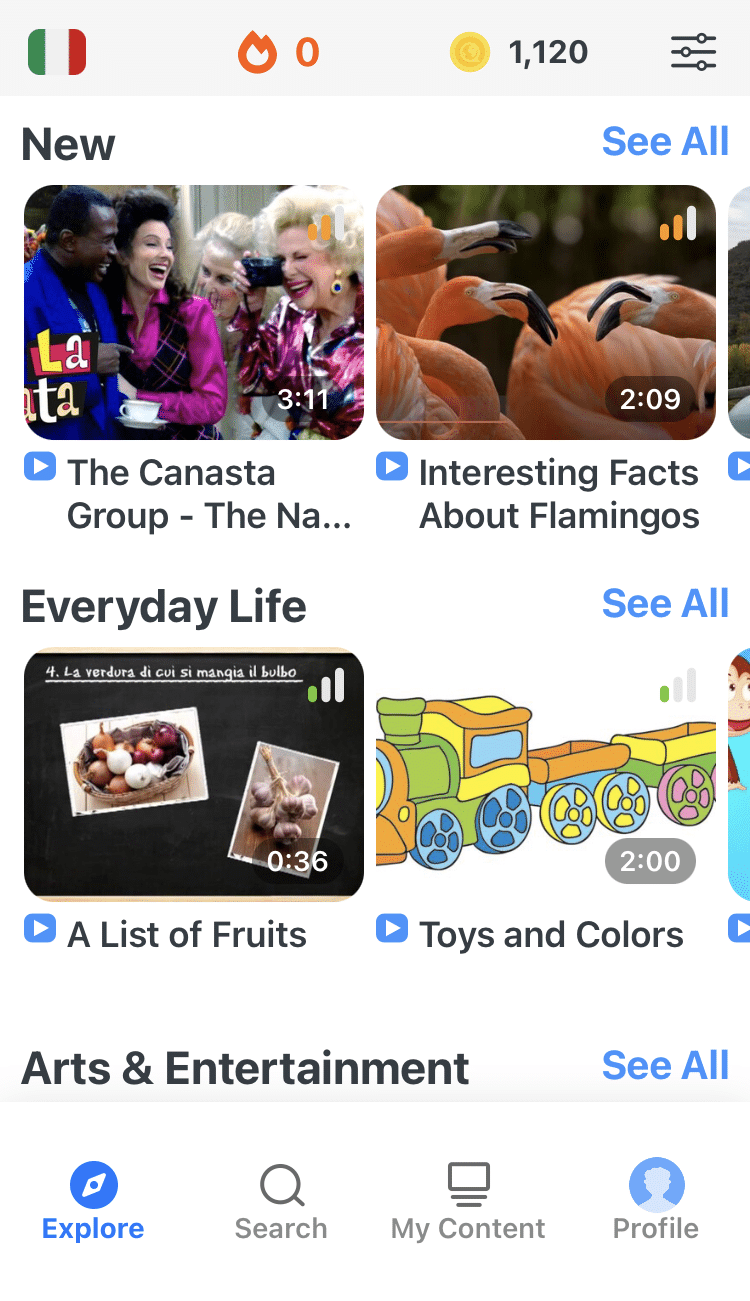
FluentU helps you get comfortable with everyday Italian by combining all the benefits of complete immersion and native-level conversations with interactive subtitles. Tap on any word to instantly see an image, in-context definition, example sentences and other videos in which the word is used.
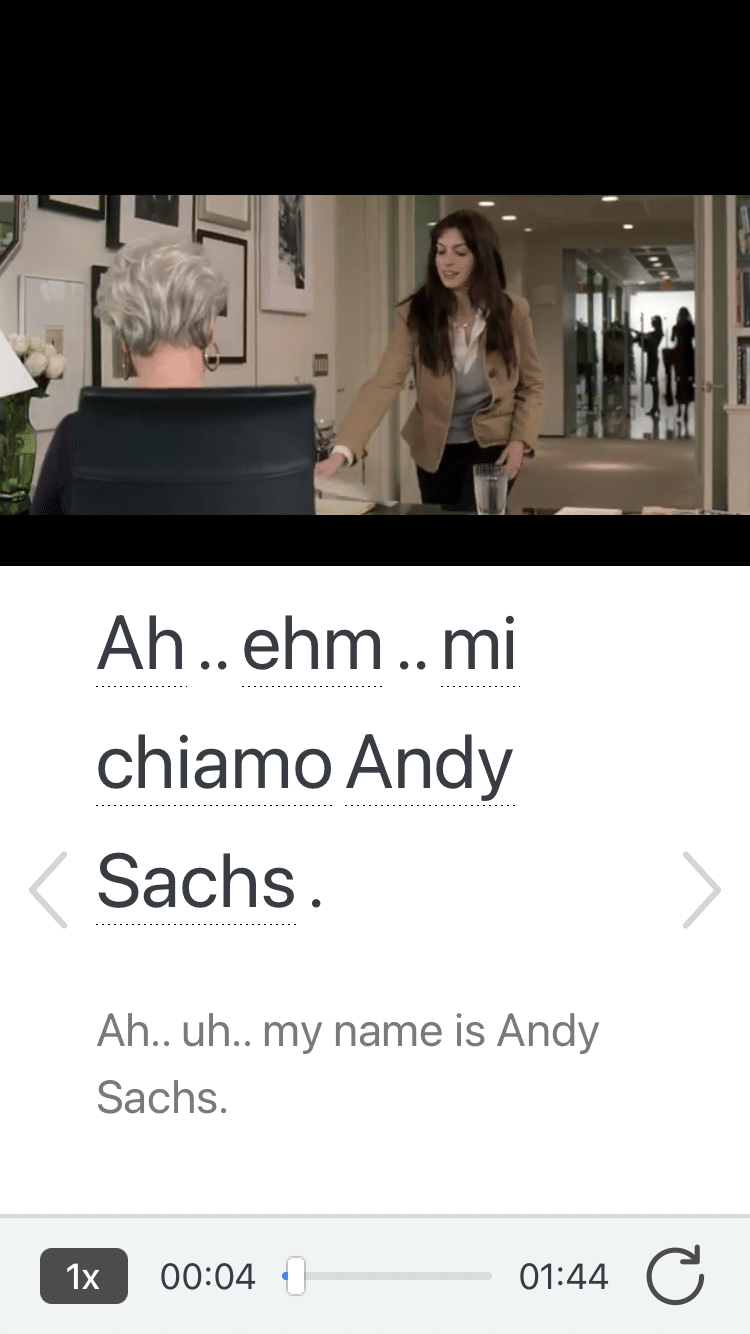
Access a complete interactive transcript of every video under the Dialogue tab, and review words and phrases with convenient audio clips under Vocab.
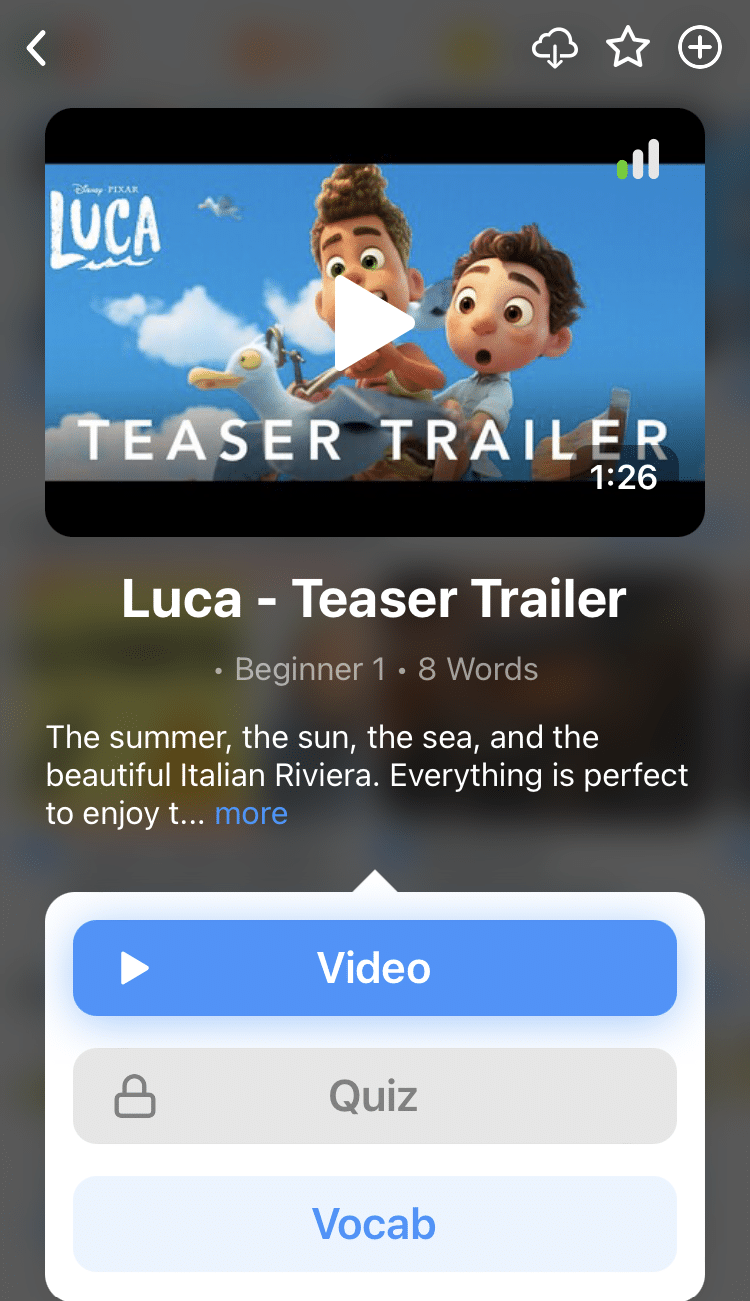
Once you've watched a video, you can use FluentU's quizzes to actively practice all the vocabulary in that video. Swipe left or right to see more examples of the word you’re on.
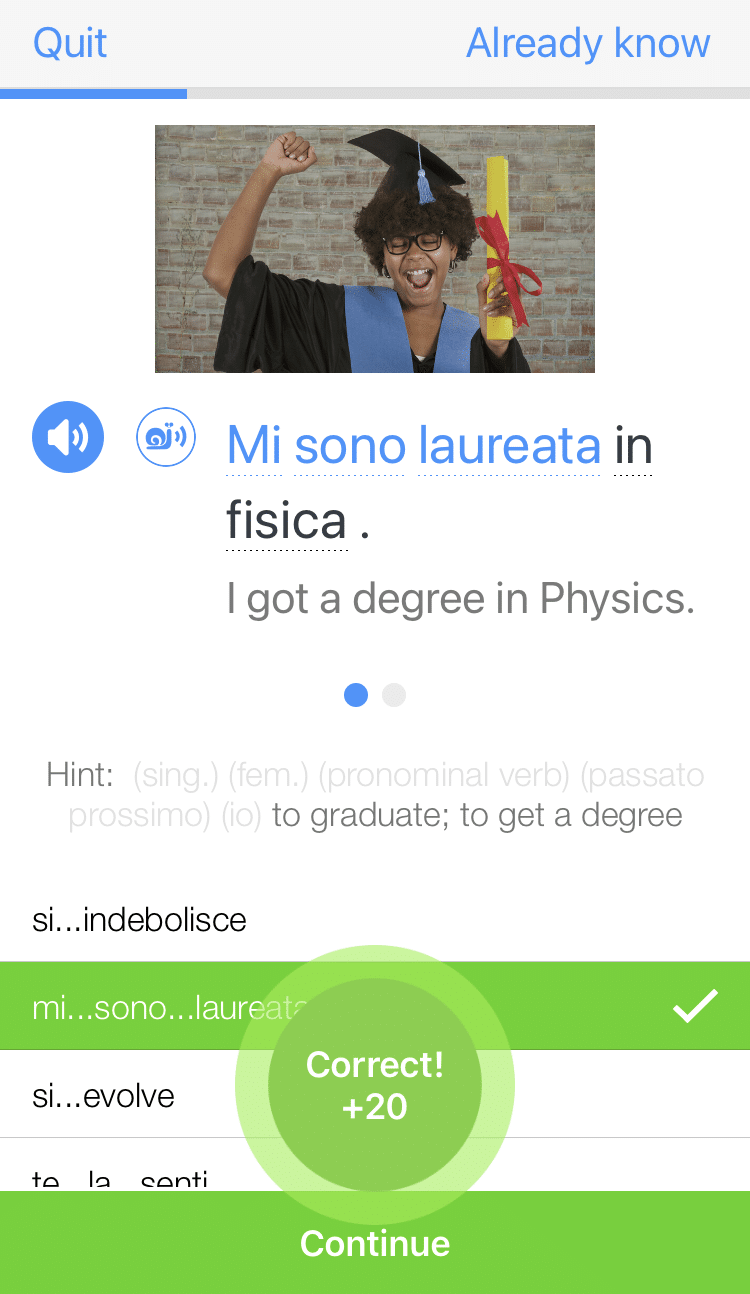
FluentU will even keep track of all the Italian words you’re learning, and give you extra practice with difficult words. Plus, it'll tell you exactly when it's time for review. Now that's a 100% personalized experience!
The best part? You can try FluentU for free with a trial.
Start using the FluentU website on your computer or tablet or, better yet, download the FluentU app from the iTunes or Google Play store. Click here to take advantage of our current sale! (Expires at the end of this month.)
